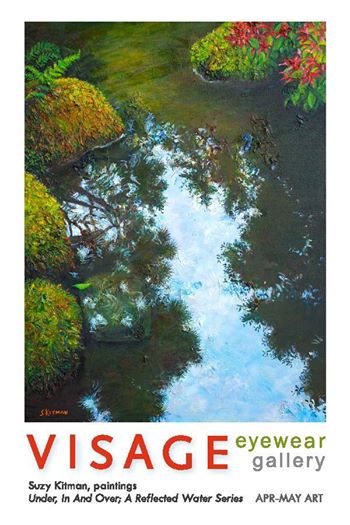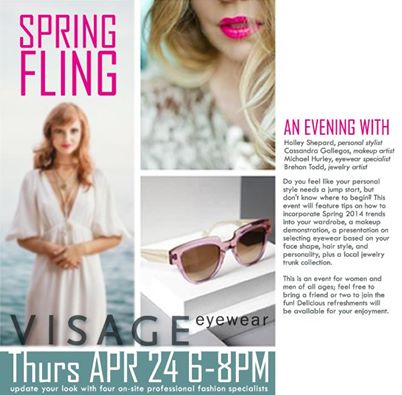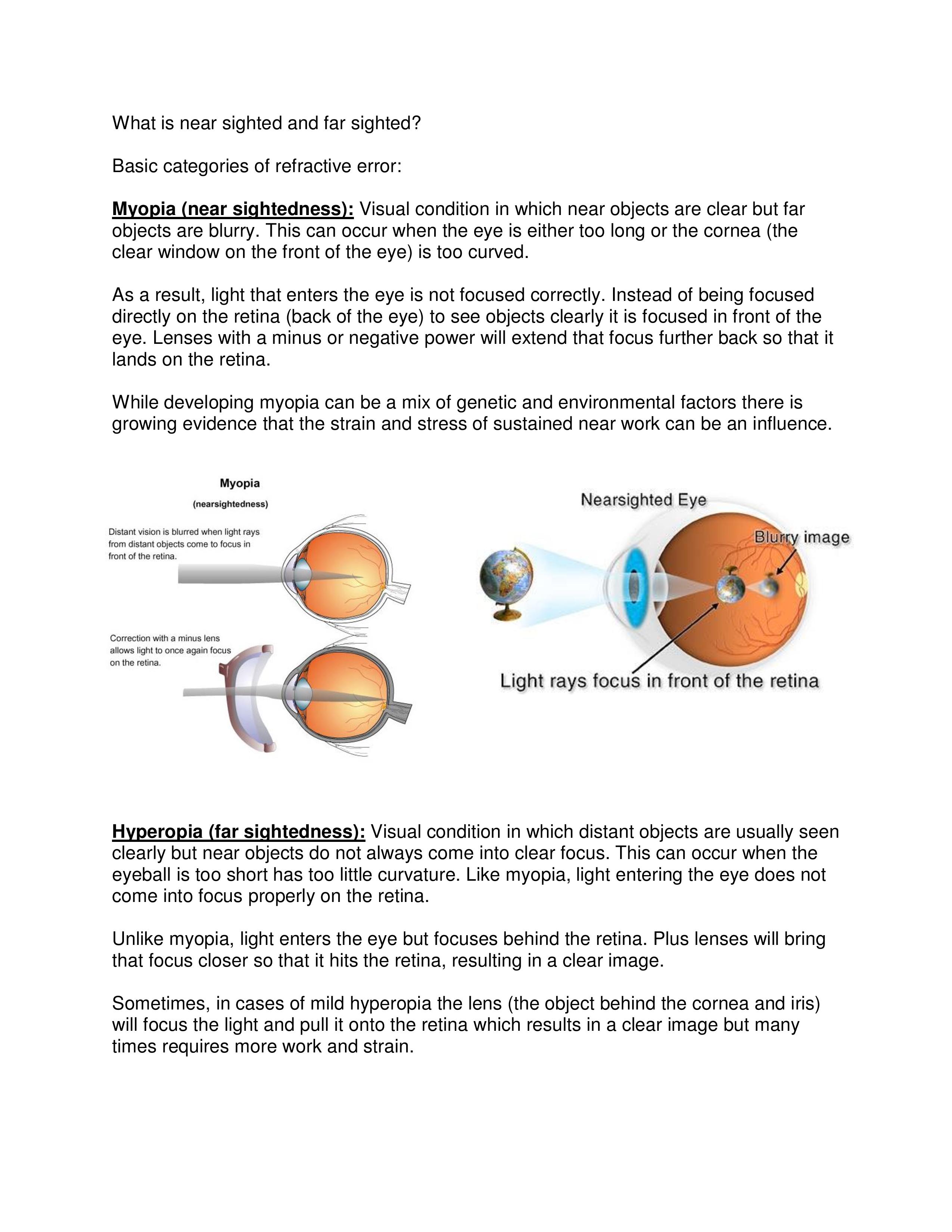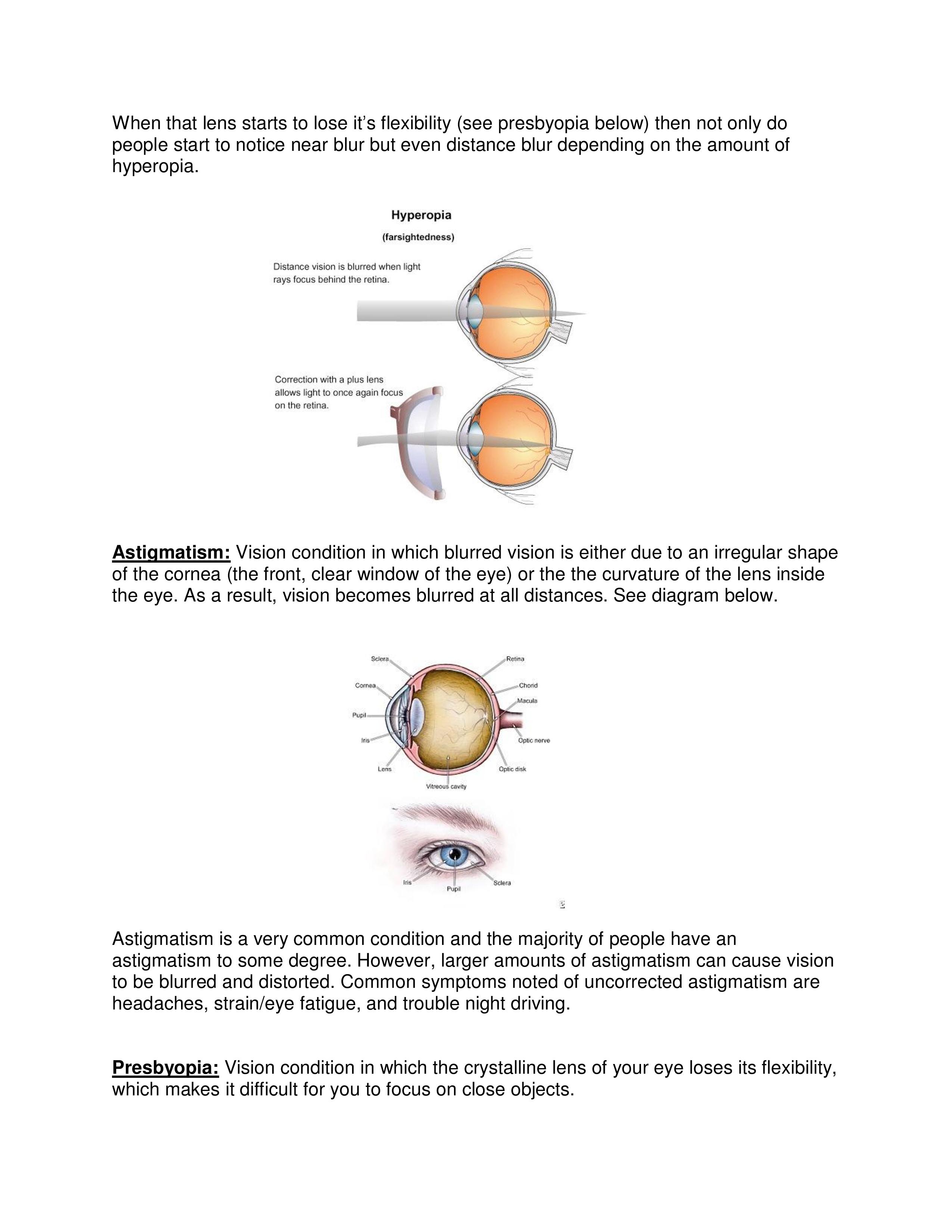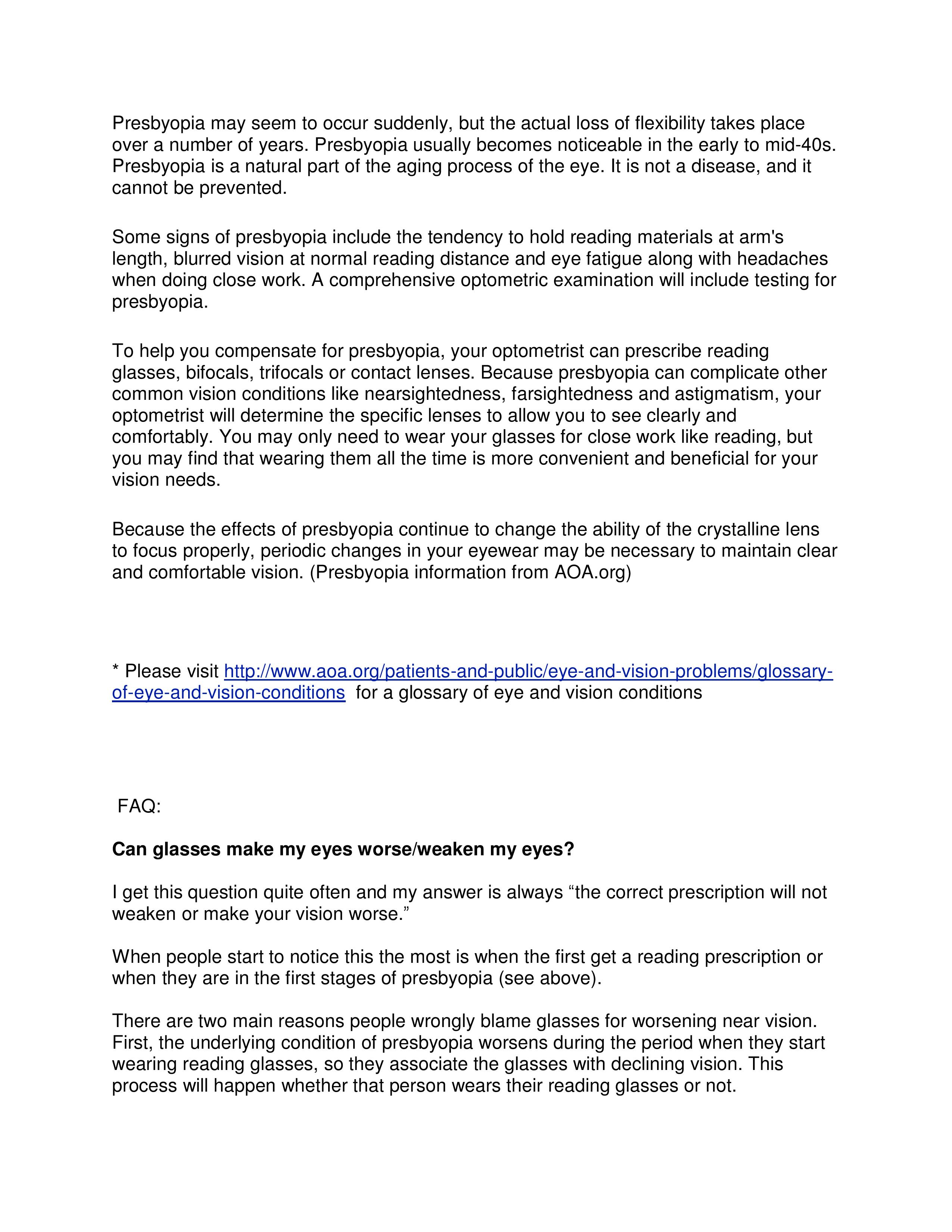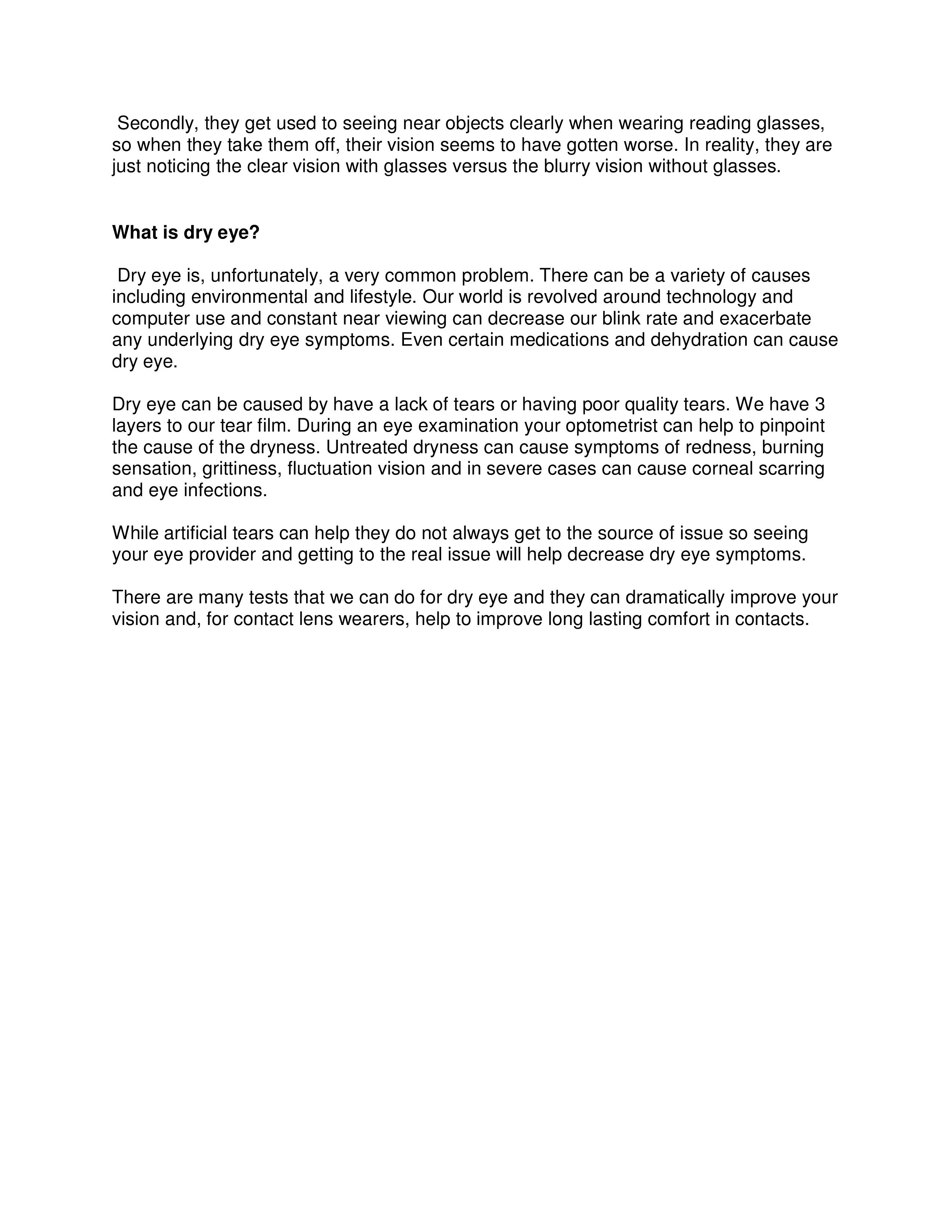We depend on our eyes for vision throughout our lives. In each stage of life we encounter new adventures, all of which are enhanced by our precious sense of sight. It is normal for our eyes and vision to change as we age, with the first important changes occurring during infancy. As we age, our eyes’ ability to focus slowly decreases, since the lens of the eye becomes less flexible, ultimately requiring vision correction devices (reading glasses). It is important for us to be aware of changes in our vision. We must also be proactive in maintaining the health of our eyes by having regular comprehensive eye exams.
Infants: A baby is born with the eye structures needed for vision, but must learn how to use them together to be able to “see.” Focusing ability and color vision are usually accomplished by three or four months of age. By four to six months of age, a baby learns eye-hand coordination. During the next six months, a baby develops the ability to judge depth. Perception skills, such as visual memory and discrimination, are also acquired during the first two years.
Children: The eyes continue to develop throughout childhood. You may wonder if your preschooler has a vision problem. Early eye exams are critical to ensure that children have normal, healthy vision so that they can perform better in school as well as at play. Early detection of vision problems is crucial because the younger a child is treated, the better the chance of responding to treatment.
Teens: Vision usually stabilizes during the teen years, with eye and vision development complete. Annual eye examinations are important, as hidden vision problems or disorders may be detected. Eye safety is also important to remember during the teen years, as sports involvement and contact lens use become popular.
Adults: As we get older, our vision changes. We may need more light to see clearly. We may have trouble focusing on near objects, such as a book in our hands. Fortunately, there are many ways to help us see our best during the adult years. As always, changes in our vision should be monitored to ensure clear vision and healthy eyes.
Seniors: Older adults need to visit the eye doctor regularly and be aware of potential vision problems to possibly catch or slow a disease before vision loss occurs.
(as posted at http://vision.about.com/od/childrensvision/p/Vision_stages.htm)
